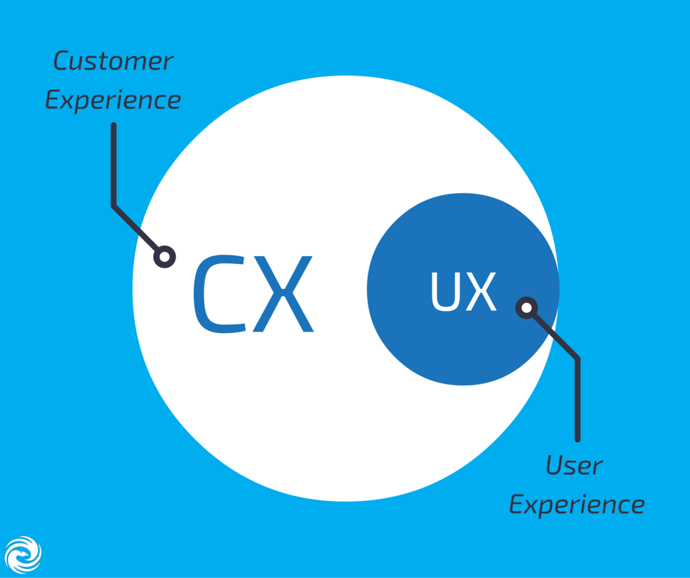Customer Experience vs. User Experience: How to Slice It

Digital customer experience is a crucial part of a successful business strategy. So is user experience. They are not, however, the same part of a business strategy. In order to properly leverage both your UX and your CX, you need to understand how they differ, what their functions are, where they should align, and where they are separate.
Defining CX and UX
In brief, user experience pertains to the experience a customer has using a particular, specific product or service, and is limited to finite interactions within that product or service.
On the other hand, customer experience is the experience a customer has at every touchpoint of interaction with your company, across different products, channels, and contexts. For instance, user experience might be how easily you can navigate an app, whereas customer experience is how easily you can report an issue with the app and see it resolved.
Understanding the difference
To put it another way, imagine you run a pizzeria. Part of what your customers will judge you on is the food you provide. They will receive a specific food item, or product, from you, and they want to be satisfied with it. How good does your pizza taste? How did it look on the plate? How easy was it to eat?
As a glance at any Yelp page will tell you, though, the food is not the only thing patrons care about. Customers will be dissatisfied with even the most delicious slice of pizza if the restaurant is dirty or unhygienic, or the service is rude or slow. If you for some reason want a fork, can you get one? Are there vegan options? Is it easy to get takeout?
In this particular metaphor, the experience your patrons had with their specific pizza is their user experience. Their overall experience with your restaurant, though, is the customer experience. The quality of the pizza is certainly part of the customer experience, but only a part.
Another way to think about customer experience and user experience is in terms of their metrics. As customer experience and user experience have different—if overlapping—functions, their success is measured in different terms. Metrics for user experience include error rate, success rate, time to complete task, and clicks to completion. Good customer experience is measured in such factors as overall experience, likelihood to continue use, and likelihood to recommend to others.
A comprehensive strategy
So in order to have a successful customer-facing strategy, you need to have both good CX and good UX, and personnel who specialize in each of these areas. Those personnel should not, however, be on completely different teams or separated silos. Despite their differences, UX is ultimately a component of CX, which means the most effective UX and CX strategies are ones that work together.
A unified customer and user experience strategy creates more consistent experiences at all touchpoints, bridging different parts of the customer journey and improving customer relationships by creating a single, solid brand for your company.
This in turn leads to more satisfied customers—which is the entire point of both UX and CX in the first place. Make sure you know where the divide is between user and customer experience, and where they should unite.
